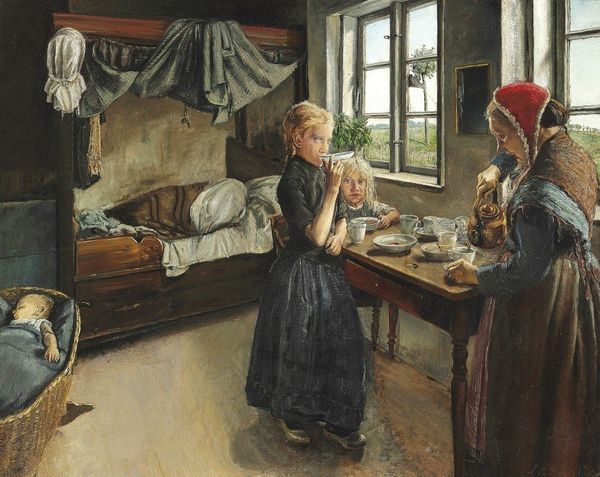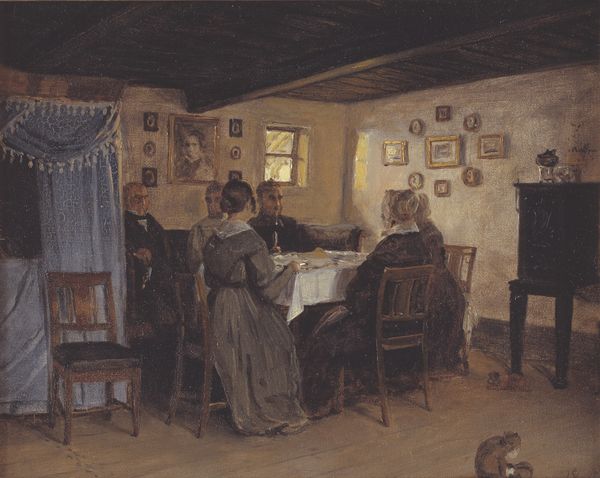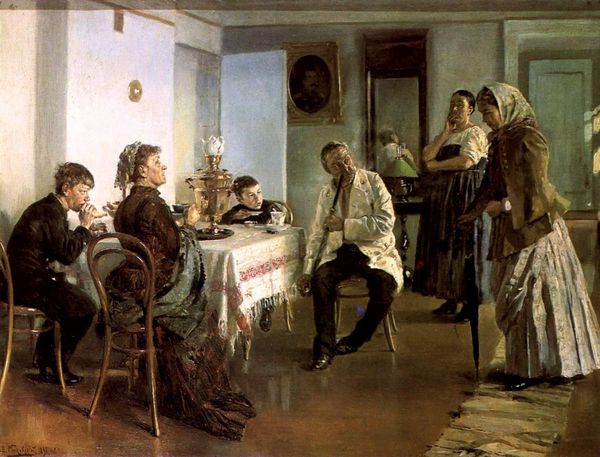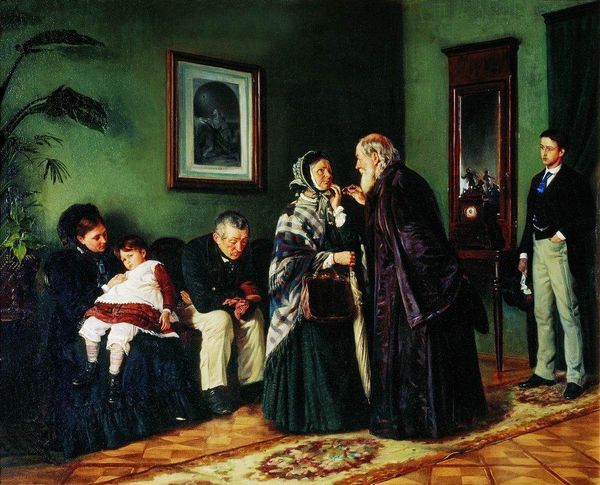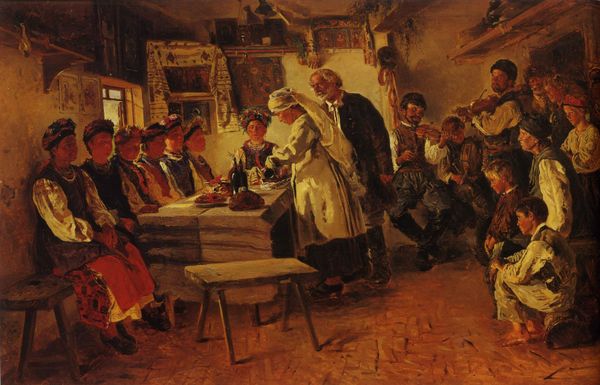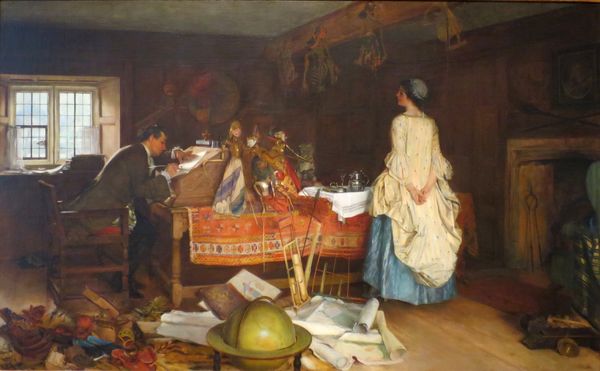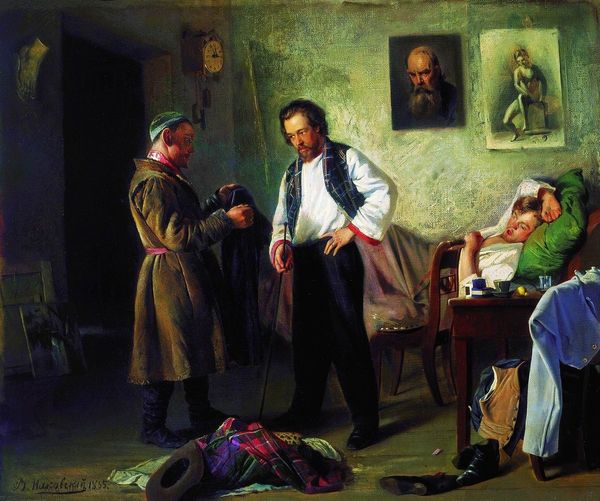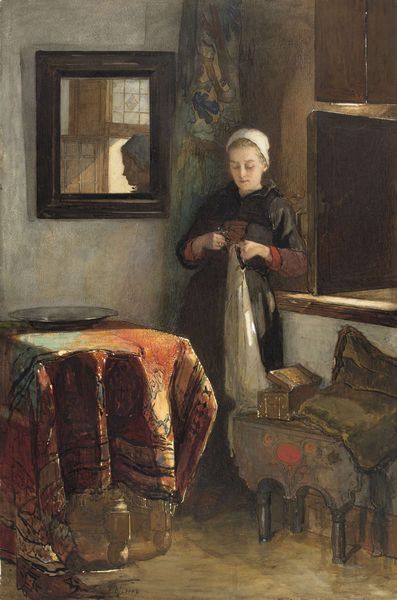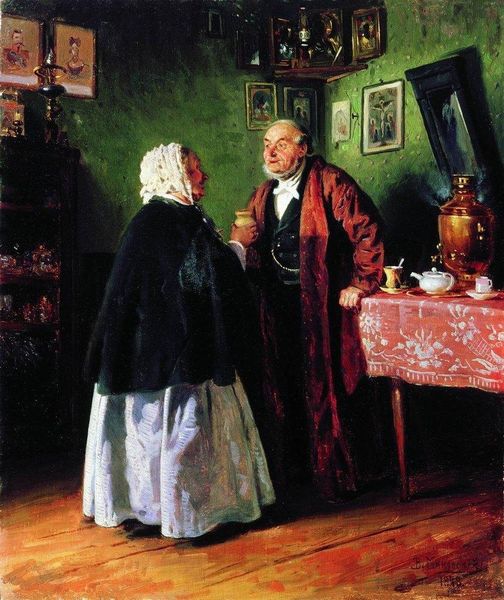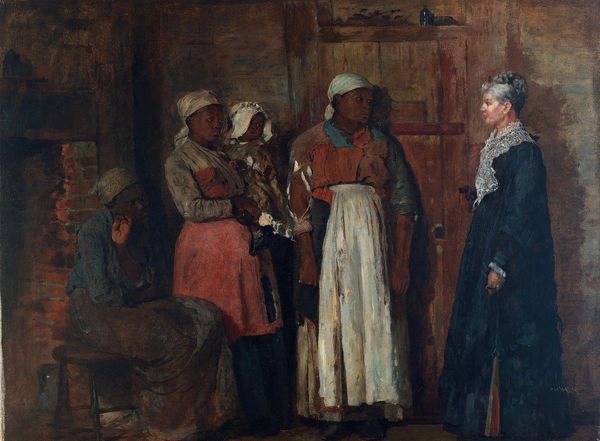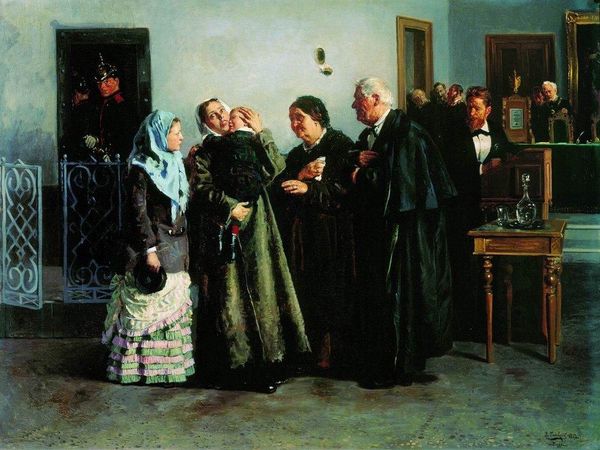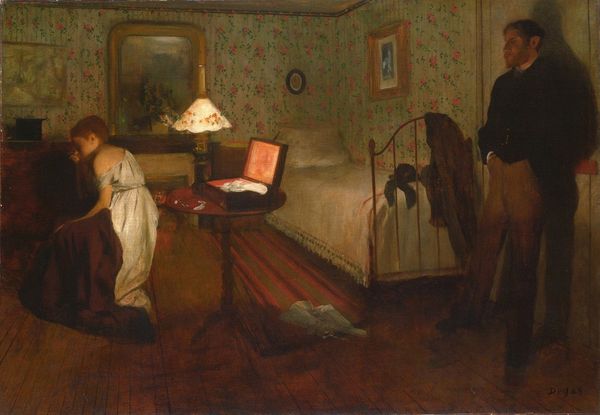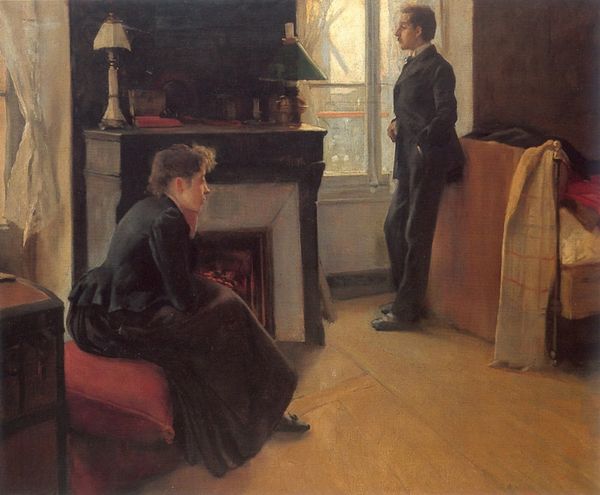
Dimensions: 167.5 x 160.5 cm
Copyright: Public domain
Editor: In Ilya Repin's "Unexpected Visitors," painted in 1888 using oil paints, we see a scene unfolding; it feels very raw and intimate. I’m struck by the detail in the fabrics, from the visitor’s worn cloak to the tablecloth. What can you tell us about the painting, looking through a material lens? Curator: It's fascinating how Repin uses oil paint to portray the textures of both the domestic interior and the figure's worn clothing, isn't it? Look closely at the stark contrast - a privileged domestic scene against a man whose garments bespeak hardship and likely manual labor. This is about more than just portraying a scene. It asks us to think about labor. What kind of social message is conveyed by contrasting the visitor's clothes, the materials of survival, against the home's decor, implying different forms of making and working? Editor: That's insightful. So, the visitor's garments aren’t just props, but tangible symbols of their working class reality in contrast to the domestic comfort inside the house. It looks like the house walls have simple and relatively cheap wallpaper on them, perhaps signalling this isn't about upper class affluence. How would a nineteenth-century viewer have interpreted these material signals? Curator: Exactly. For the original viewers, steeped in Tsarist Russia's rigid class structure, such blatant contrasts were unsettling. The raw materiality spoke of social and political unrest. Consider also Repin's choice of subject matter. What implications did genre-painting and narrative-art, showing scenes from daily life, hold compared to traditional subjects of the Academy like religion or history? Did this foreground everyday lives of the working class in a new way? Editor: So, Repin utilizes common materials—fabric, paint, domestic items—not just to depict reality, but to critique the socio-economic disparities within Russian society at that time, and challenge what stories were worth telling. Curator: Precisely! Art, especially paintings such as this, becomes a material record of social tensions and aspirations. Hopefully, you've gained a richer perspective now. Editor: Yes, absolutely. Thanks for illuminating this with the focus on materials, manufacture, and its reception.
Comments
No comments
Be the first to comment and join the conversation on the ultimate creative platform.
